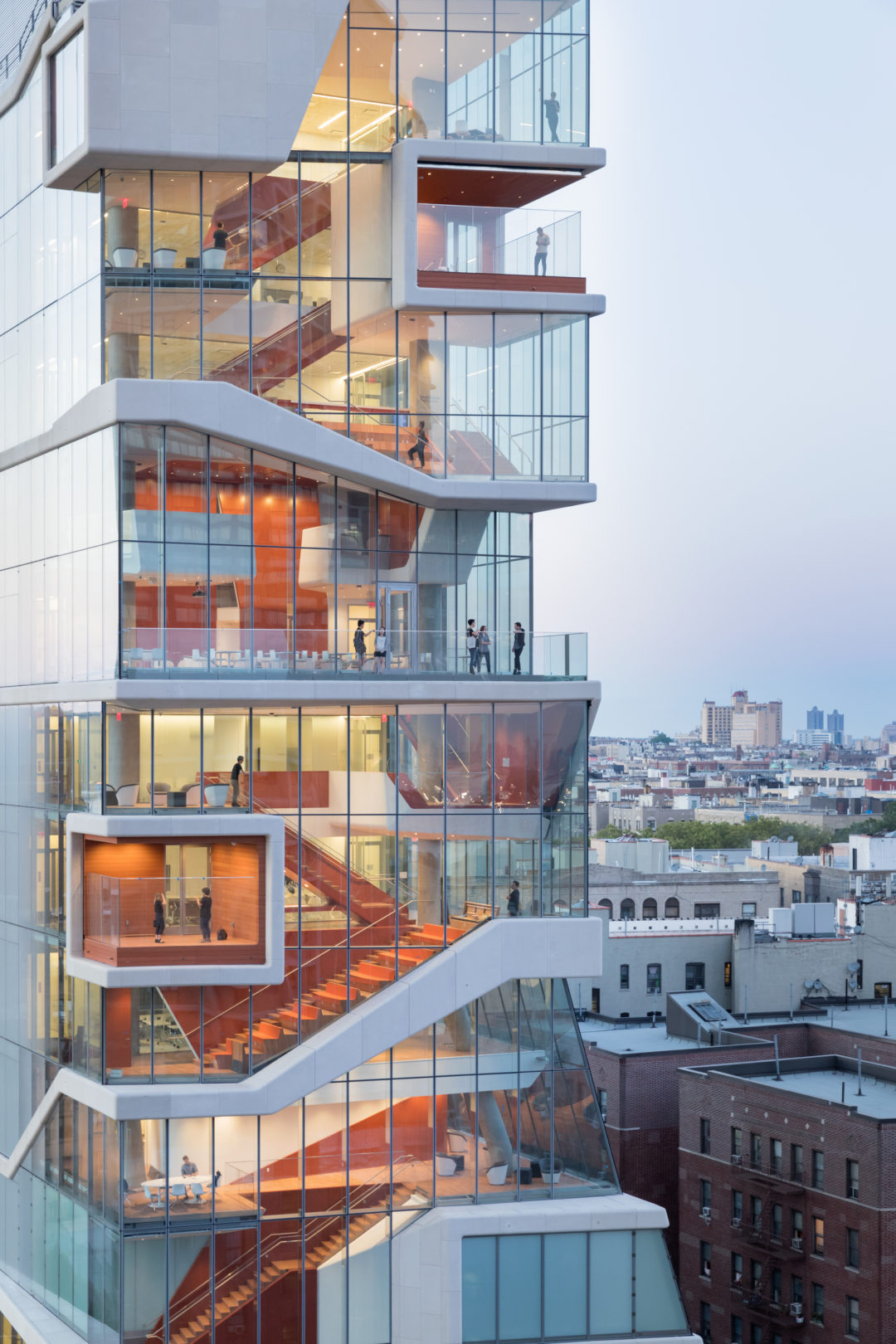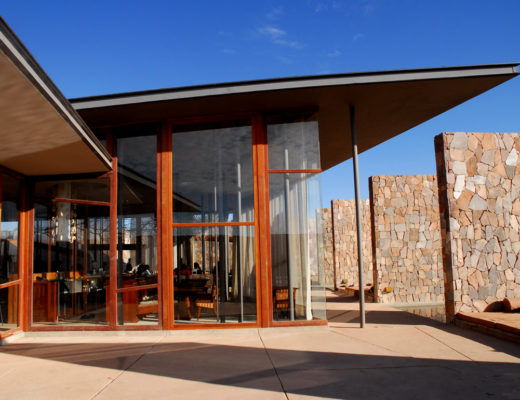Columbia University Medical Center’s new, state-of-the-art medical and graduate education building, the Roy and Diana Vagelos Education Center, will open to faculty and students on August 15, 2016 for the start of the fall term. Designed by the New York-based interdisciplinary design studio Diller Scofidio + Renfro, in collaboration with Gensler as executive architect, the Vagelos Education Center is a 100,000-square-foot, 14-story glass tower that incorporates technologically advanced classrooms, collaboration spaces, and a modern simulation center to reflect how medicine is taught, learned, and practiced in the 21st century. The design seeks to reshape the look and feel of the Medical Center campus, and also create spaces that facilitate the development of skills essential for modern medical practice.
The building is named in recognition of the generosity of an initial lead gift from P. Roy Vagelos, MD, a distinguished alumnus of Columbia’s College of Physicians and Surgeons, and his wife, Diana Vagelos, an alumna of Barnard College and the Vice Chair of the Trustees of Barnard College. The Vagelos Education Center was funded through the generosity of many committed friends, faculty and alumni donors. Construction began in September 2013.
In addition to the new Vagelos Education Center, initiatives to revitalize the campus include increasing green space, creating a new gateway to the medical school, consolidating student services, renovating several existing buildings, and constructing new spaces, including the new home for the Columbia School of Nursing. The Vagelos Education Center will help define the northern edge of the campus and provide a bridge to the surrounding Washington Heights community.
About the Design
The Vagelos Education Center is a 14-story glass, concrete, and steel structure anchored by a network of social and study spaces distributed along an exposed, interconnected vertical staircase that extends the height of the building—known as the “Study Cascade”—and encompasses 100,000 square feet of advanced medical and scientific facilities. The alcove interiors of the Study Cascade, designed to be conducive to collaborative, team-based learning and teaching, open onto south-facing outdoor spaces and terraces. Other key elements of the design include:
Ground floor lobby and cafe?, which adjoin a “study bar” with views of the Palisades.
Student Commons, which features a cafe?, computer work area and computer labs.
Advanced clinical simulation center, a specialized space for mock examination rooms, clinics and operating rooms.
Multi-purpose auditorium, a 275-seat flexible space used for campus-wide events such as lectures, screenings and concerts.
“Academic Neighborhoods,” groups of classrooms that can be configured according to need by operable partitions, drop down screens and large-scale multi-user touch screens, suspended ceilings, and distributed power and data at the floor.
“Space matters for structured and informal learning,” said Elizabeth Diller, founding partner at Diller Scofidio + Renfro. “To support Columbia’s progressive medical education program, we designed a building that will nurture collaboration. Its defining feature is the Study Cascade–a 14-story network of vertically linked spaces in a variety of sizes, both focused and social, private and communal, indoors and out.”
“The Vagelos Education Center started with a clear vision as a place of excellence for higher learning that would also act as a much needed social center,” said Maddy Burke-Vigeland AIA, Principal at Gensler. “Because of everyone’s deep involvement, it has transformed into something that exceeds even those high expectations: a vibrant new hub for Columbia’s Medical Center campus.”
DS+R’s design takes advantage of an incredible view of the Hudson River and the Palisades. The building also integrates a range of sustainable features—including locally sourced materials, green roof technologies, and an innovative mechanical system that minimizes energy and water use—and the fac?ade features ceramic “frit” patterns that are baked onto the exterior glass to diffuse sunlight. All new construction and renovation projects—including the Vagelos Education Center—work toward the goal of minimizing CUMC’s carbon footprint and reducing greenhouse gas emissions by 30% by 2025.
- Roy and Diana Vagelos Education Center
- Roy and Diana Vagelos Education Center
- Roy and Diana Vagelos Education Center
- Roy and Diana Vagelos Education Center
- Roy and Diana Vagelos Education Center
- Roy and Diana Vagelos Education Center
- Roy and Diana Vagelos Education Center
- Roy and Diana Vagelos Education Center
- Roy and Diana Vagelos Education Center
- Roy and Diana Vagelos Education Center
- Roy and Diana Vagelos Education Center
- Roy and Diana Vagelos Education Center
- Roy and Diana Vagelos Education Center
- Roy and Diana Vagelos Education Center
- Roy and Diana Vagelos Education Center
- Roy and Diana Vagelos Education Center



























No Comments